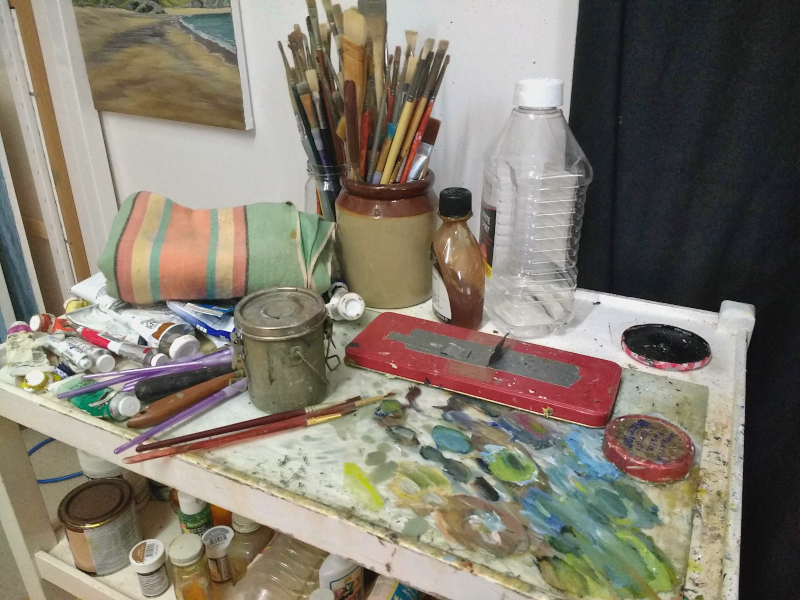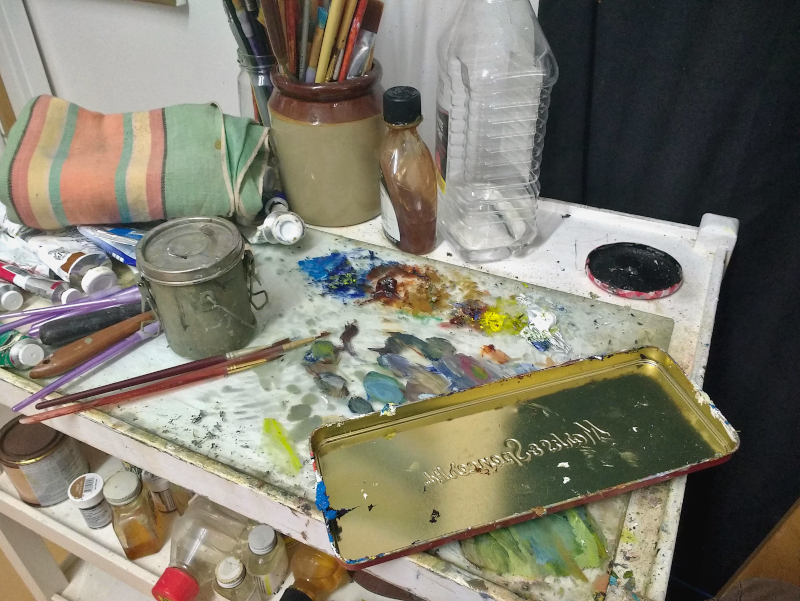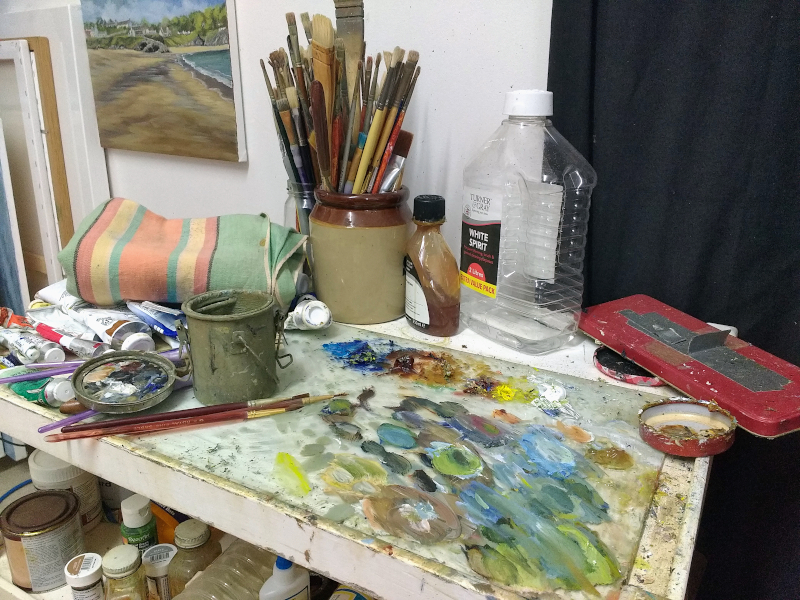Oil paint can be expensive, and the last thing you want is to waste it because it dries out on your palette in between painting sessions. Your paint drying out is of course a pain, but the fact you know it will dry can stop you squeezing out enough paint onto your palette in the first place, which then leads to what’s called a ‘starved palette’. A starved palette is when you’re so concerned about wasting paint that you simply don’t have enough of the stuff on your palette to paint with properly.
When I started oil painting I came over from years of watercolour painting, and brought over the same mentality of using thin washy paint, which was a mistake. Oil painting is different, and part of the joy of it is using thick buttery paint to create luscious vibrant paintings. This is hard, if not impossible to do, if you don’t use enough paint. If someone were to ask me my number one tip to improve their oil painting, I’d say use more paint.
When you use a glass palette as I do, placing your palette in the fridge to stop the paint drying out ( a common method for more portable palettes ) is not an option, with that in mind, look at the photographs below to see how I stop my oil paint from drying out on my palette between painting sessions.
You’ll also notice I use the top of a Branston pickle jar to place over the Liquin on my palette, to do exactly the same job of stopping it drying out between sessions. Liquin is a quick-drying medium for oil and alkyd paint.
If you found this information useful please consider sharing it, thanks.
Chris



I just found a baking sheet in my studio that is the exact size of my entire glass palette, 12×16” – fits over the whole thing! VERY excited about this 😂Thank you again!
So helpful, thank you! I am a lifetime oil painter and have struggled with the Saran Wrap method 🙁 so messy AND wasteful! Appreciate this tip!